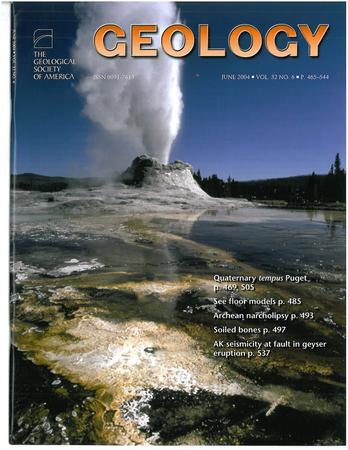Paleoseismic evidence of directivity for the 1976 Mw 7.5 Motagua earthquake, Guatemala
IF 4.6
1区 地球科学
Q1 GEOLOGY
引用次数: 0
Abstract
On 4 February 1976, a Mw 7.5 earthquake along the Motagua fault, Guatemala, ruptured ∼230 km of the North American and Caribbean plate boundary. Today, the plate boundary remains poorly monitored, and the 1976 earthquake is still not fully understood. Here, we present seismic reflection profiles and radiometrically dated sediment core data from six lakes around the Motagua fault, together with reports of destruction and a quasi-dynamic rupture model, which show that the 1976 earthquake experienced strong directivity that impacted the distribution of shaking. The earthquake left behind a detailed record of event deposits (EDs) in five of the six study lakes. Thicker EDs are present in Lake Atitlán, near the terminus of the earthquake rupture, whereas thinner EDs were found in lakes off-axis of the rupture direction. We argue that EDs can be utilized to constrain asymmetrical distribution of shaking during earthquakes and that paleoseismic studies should consider directivity as a factor controlling the thickness of EDs.1976年危地马拉莫塔瓜7.5 Mw地震的方向性古地震证据
1976年2月4日,沿危地马拉莫塔瓜断层发生的7.5级地震使北美和加勒比板块边界断裂约230公里。今天,对板块边界的监测仍然很差,1976年的地震仍然没有完全了解。本文介绍了莫塔瓜断裂带周围6个湖泊的地震反射剖面和放射性定年沉积物岩心数据,以及破坏报告和准动态破裂模型,表明1976年地震经历了强烈的指向性,影响了地震的分布。地震在六个研究湖泊中的五个留下了事件沉积物(EDs)的详细记录。在靠近地震破裂终点的Atitlán湖中存在较厚的EDs,而在离破裂方向轴的湖泊中发现较薄的EDs。我们认为能谱可以用来约束地震时震动的不对称分布,古地震研究应考虑指向性作为控制能谱厚度的一个因素。
本文章由计算机程序翻译,如有差异,请以英文原文为准。
求助全文
约1分钟内获得全文
求助全文
来源期刊

Geology
地学-地质学
CiteScore
10.00
自引率
3.40%
发文量
228
审稿时长
6.2 months
期刊介绍:
Published since 1973, Geology features rapid publication of about 23 refereed short (four-page) papers each month. Articles cover all earth-science disciplines and include new investigations and provocative topics. Professional geologists and university-level students in the earth sciences use this widely read journal to keep up with scientific research trends. The online forum section facilitates author-reader dialog. Includes color and occasional large-format illustrations on oversized loose inserts.
 求助内容:
求助内容: 应助结果提醒方式:
应助结果提醒方式:


